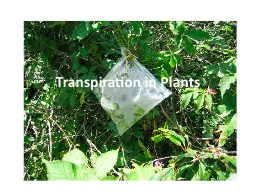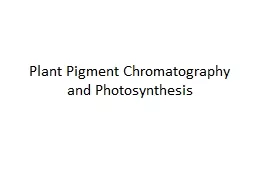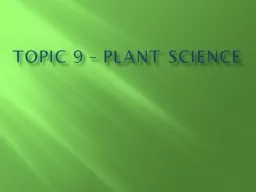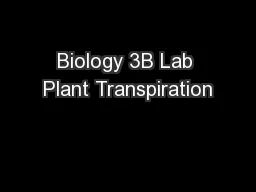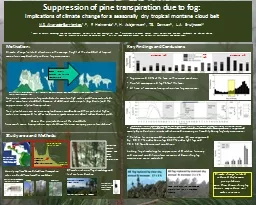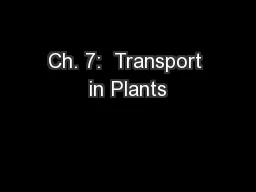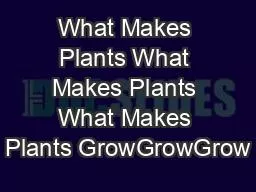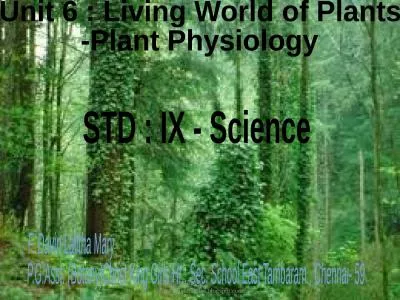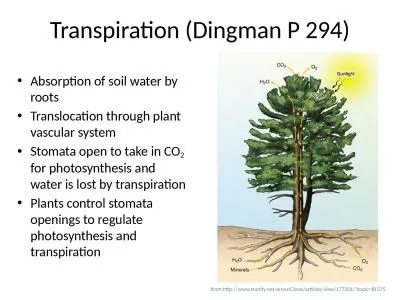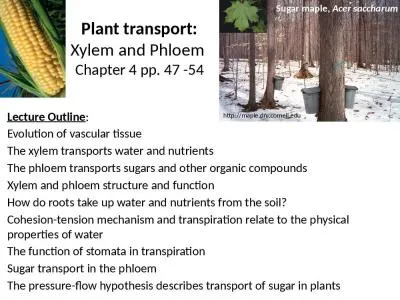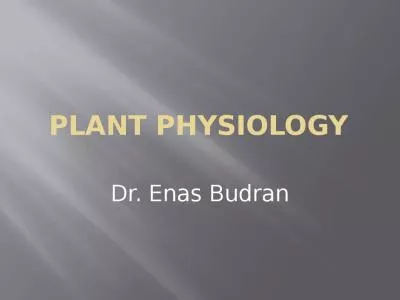PPT-Transpiration in Plants
Author : olivia-moreira | Published Date : 2016-07-30
STEP 1 STEP 2 STEP 3 STEP 4 STEP 5 Pressure Flow Hypothesis Pressure Flow Hypothesis STEP 1 Food and water enters phloem of the stem through diffusion and osmosis
Presentation Embed Code
Download Presentation
Download Presentation The PPT/PDF document "Transpiration in Plants" is the property of its rightful owner. Permission is granted to download and print the materials on this website for personal, non-commercial use only, and to display it on your personal computer provided you do not modify the materials and that you retain all copyright notices contained in the materials. By downloading content from our website, you accept the terms of this agreement.
Transpiration in Plants: Transcript
STEP 1 STEP 2 STEP 3 STEP 4 STEP 5 Pressure Flow Hypothesis Pressure Flow Hypothesis STEP 1 Food and water enters phloem of the stem through diffusion and osmosis STEP 2 Water from xylem is transferred to the phloem to help break downdissolve food in the phloem The water pressure is kept at low . Objectives:. *Define the term translocation. **Describe the translocation of applied chemicals such as systemic pesticides throughout the plant. *** Compare transpiration with translocation. Starter:. Warm up (11-23-15). Explain what you know about plants.. Try to be specific and use scientific terms if possible.. Outline. Objectives. Plant Background Info. Objectives. To gain background information about plants and how they colonized land. Introduction to Plants. Plants make . up . over 50% . of the living organisms on this planet. They belong to the kingdom . Plantae. There are five phylum:. Bryophyta. Filicinophyta. Coniferophyta. Angiospermophyta. Biology 3B Lab Plant Transpiration Page 2 of 3 4. Keep the cut end of the stem submerged. Carefully attach the cut end of the corn seedling to t Stomatal. Mechanism. Stomata. Stomatal. Mechanism. pores . or . gaps . in the lower epidermis through which gaseous exchange . and water loss take place. Found in leaves and stems. Surrounded by. . Frequent immersion in fog . contributes to maintain high water yield from watersheds within . montane. cloud belts because of additional water inputs (fog, drizzle) and the s. uppression . of . plant transpiration.. GCSE (or any course for students aged. 11-16). Outcomes. Be able to label the structure of a typical leaf. Describe and understand the role of stomata and the waxy cuticle in transpiration. Information for teachers. AICE Biology 2017 . Introduction. Plants use photosynthesis to convert light energy to chemical energy . Simple organic substances, such as CO2, H2O and ions are used in their raw form to produce glucose and other carbohydrates.. PURPOSE To become familiar withwhat makes plants growOBJECTIVES For youth to identify five basic plantneedsdescribe what a plantneeds in order tomanufacture its own fooddescribe how the nutrientconten -Plant Physiology . STD : IX . - Science . F. Davin Lalitha Mary. P.G.Asst. (Botany). Christ King Girls Hr . Sec. School. . East Tambaram , Chennai- 59. கல்வி அமுது . Absorption of soil water by roots. Translocation through plant vascular system. Stomata open to take in CO. 2. for photosynthesis and water is lost by transpiration. Plants control stomata openings to regulate photosynthesis and transpiration . Dr. Habibur Rahman. Associate Professor. J. N. College, Boko . Introduction:. The loss of water in the form of vapor from the living tissues of aerial parts of plant such as leaf, stem, leaves etc. is termed as transpiration.. Chapter 4 pp. 47 -54. Lecture Outline. :. Evolution of vascular tissue. The xylem transports water and nutrients. The phloem transports sugars and other organic compounds. Xylem and phloem structure and function. . Budran. Plant cells as osmotic systems. OP . TP. WP. TP=WP. DPD (SF). In pure solvent. SF is related with OP and TP . SF = OP –TP. For fully turgid cells. SF = 0 . OP = TP . For fully plasmolyzed cells .
Download Rules Of Document
"Transpiration in Plants"The content belongs to its owner. You may download and print it for personal use, without modification, and keep all copyright notices. By downloading, you agree to these terms.
Related Documents

